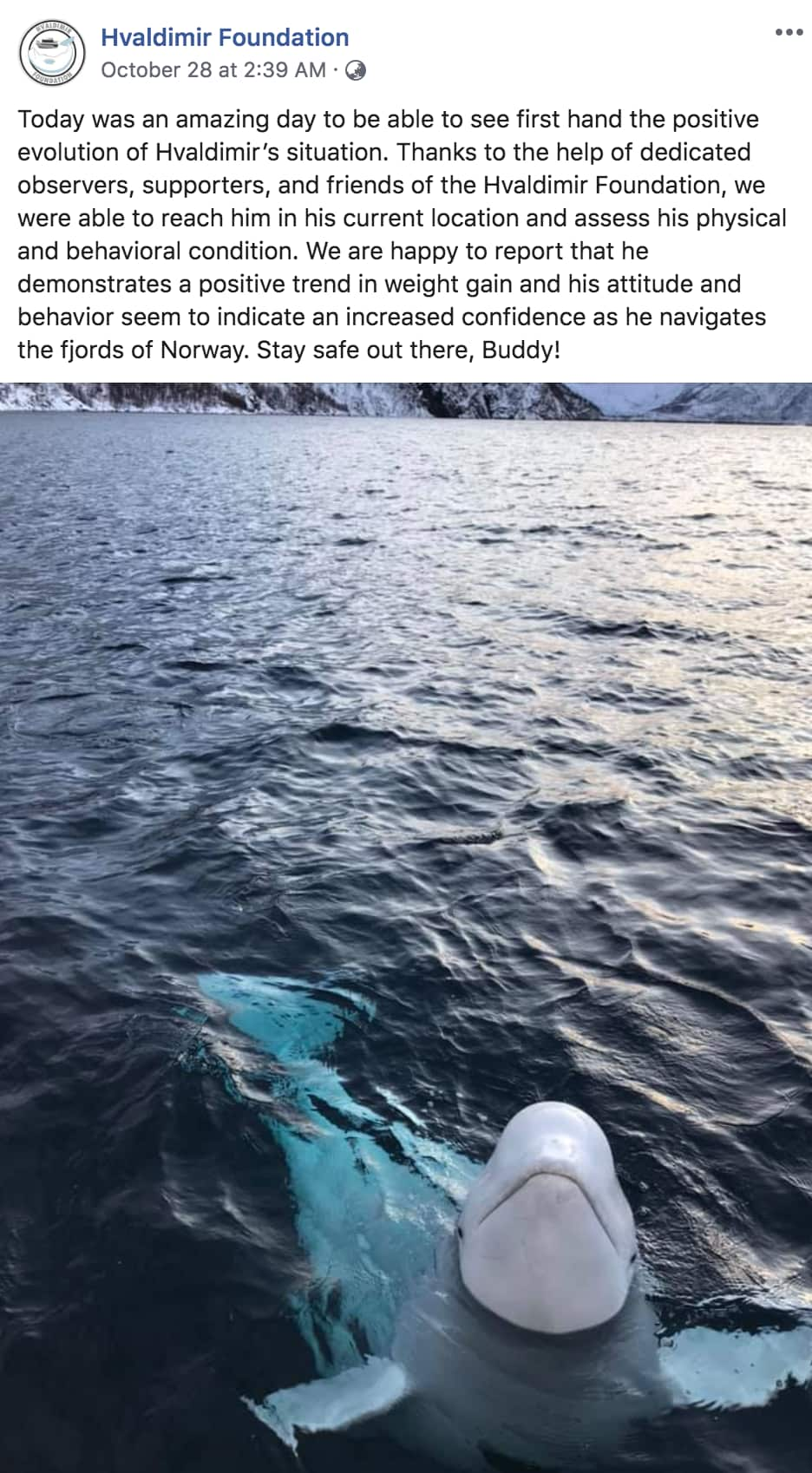Over the weekend a video of a beluga whale playing fetch with a boatful of rugby fans went viral, amassing more than 20 million video views on Twitter.
However, according to researchers, the beluga in question could be an escaped espionage tool for the Kremlin.
Although the original source of the rugby-playing video is unknown, a man in the video can be seen wearing a jacket with the logo of a vessel called “Danah Explorer”, which is currently in Norwegian waters.
Since the Cold War, there have been reports of Russia training beluga whales, dolphins, sea lions and fur seals to search for underwater mines.
In a series of tweets, New York Times and Scientific American science writer Ferris Jabr shared a theory that the whale in the video is actually Hvaldimir, an escapee of a Russian military program.
Aquatic mammal researcher Quad Finn and Zoologist Darran Nash have both backed up the theory.
Hvaldimir first came to public attention in April of this year when fishermen in waters near the small Norwegian fishing village of Inga reported a whale wearing a harness harassing their boats.
The inside of the harness was imprinted with the words “Equipment of St. Petersburg”, leading experts to believe that the whale had escaped from Russian captivity.
“If this whale comes from Russia – and there is great reason to believe it – then it is not Russian scientists, but rather the navy that has done this,” said Martin Biuw of the Institute of Marine Research in Norway told .
Audun Rikardsen, professor at the department of arctic and marine biology at the Arctic University of Norway told Norwegian broadcaster NKR that Russian researchers denied knowledge of Hvaldimir.
“They tell me that most likely is the Russian navy in Murmansk,” said Rikardsen.
However, for marine life experts like Finn and Jabr, what’s most concerning is the health of military marine life.
After rising to fame, reported that the whale had taken to hanging out around the Norwegian town of Hammerfest.
Since then, the town has implemented an education program about Hvaldimir’s history.
After it was observed that Hvaldimir didn’t possess necessary hunting skills due to being hand-raised, the town was granted permission to feed the whale. Photo credit: Norwegian Orca Survey
Photo credit: Norwegian Orca Survey
The foundation’s last update on Hvaldimir came in late October when it was reported that he is, “demonstrating a positive trend in weight gain and his attitude and behaviour seem to indicate an increased confidence.”

Source: Facebook
Hvaldimir is not the first marine animal caught up in military duty.
In 2017, a Russian state TV network claiming that the country was running experiments with a variety of sea-life.
'It was planned that white whales could be on duty at the entrances to naval bases,” the report said.
'But (they) turned out to be very delicate animals - they easily got ill after long swimming in cold polar waters.'
The report also mentioned the usefulness of seals in military work.
"The seal can be actively in touch with a diver - it can bring up a tool or carry away something, and it can distinguish 'his' diver from a stranger."
If the seal receives a special signal, it can block or kill the underwater saboteur.
The US Navy also runs a , training bottlenose dolphins and Californian sea lions in military operations.
Dolphins are trained to search for and mark the location of undersea mines that could threaten the safety of those on board military or civilian ships.
While sea lions’ locate and attach recovery lines to Navy equipment on the ocean floor.
Both animals are used to, “assist security personnel in detecting and apprehending unauthorized swimmers and divers that might attempt to harm the Navy’s people, vessels, or harbour facilities.”










